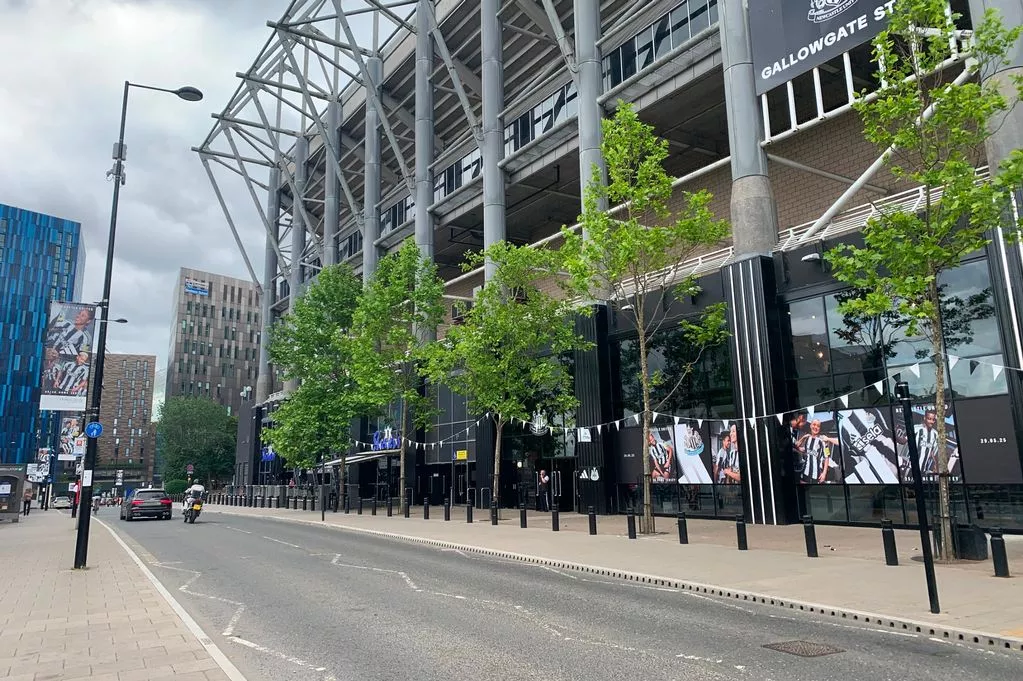Newcastle United’s long-running discussion over expanding St James’ Park or moving to a brand-new stadium has reached a crucial point. The club’s owners and executives are weighing options that could shape the future of football on Tyneside for generations to come.
While there is a clear understanding that a new stadium could eventually deliver a capacity of around 70,000, the current challenge lies in deciding whether to stay put and expand or take on the financial and logistical burden of building elsewhere.
The findings of a detailed feasibility study have confirmed that expanding St James’ Park is indeed possible. The most realistic option would involve major reconstruction work at the Gallowgate End a move that would transform the iconic end into a breathtaking, modern structure.
This development could push the overall capacity beyond 60,000 seats, allowing the club to meet soaring demand from supporters who have been struggling to secure matchday tickets.
The proposed work would not come cheap, but it would help Newcastle strengthen its home advantage and generate more matchday revenue without the uncertainty of relocating.
Club sources have revealed that the ownership group is still undecided about the final plan. Since the 2021 takeover, the hierarchy has worked methodically, improving facilities such as the training ground, hospitality suites, and various sections of the existing stadium.

Those upgrades have already elevated Newcastle’s off-field standards to match the team’s growing ambitions on the pitch. Yet, expanding the stadium remains one of the biggest and most emotionally charged decisions the club has to make.
Back in 2024, Brad Miller, the club’s stadium development chief, made it clear that the owners wanted to “write only one cheque.” His comments reflected the Saudi owners’ desire to avoid spending heavily on redeveloping St James’ Park now, only to invest again in a new stadium later.
However, with planning permissions, land studies, and long-term projects taking years to complete, the notion of waiting a decade before a new ground is ready comes with significant financial drawbacks.
Delaying expansion could result in lost ticket revenue and reduced profit growth at a time when demand for seats is higher than ever.
The club’s leadership now faces a practical question: would a short-term expansion pay for itself while plans for a potential new stadium continue? Increasing capacity at the Gallowgate End could be completed during a close season, minimizing disruption.
It would also follow the example set by Liverpool, who successfully added 7,000 seats during the 2023 campaign. A similar move by Newcastle could unlock millions in extra revenue and give supporters greater access to live matches.
Redeveloping the Strawberry Place area land owned by the club would be essential to achieve this vision. The project would require careful coordination to ensure construction begins right after a season ends and is completed before the next one kicks off.
Historically, Newcastle has managed such ambitious upgrades. In the early 1990s, the club redeveloped the Leazes End and then moved on to the Gallowgate, before Freddy Shepherd oversaw the expansion that took St James’ Park from 36,000 to over 52,000 in the early 2000s.
Now, more than two decades later, demand for tickets has exceeded supply once again, underlining the need for another major step forward.
Despite the growing impatience among fans, Newcastle’s leadership insists on getting this right rather than rushing into a decision. The goal is to deliver a design that not only enhances the matchday experience but also ensures strong long-term returns.
As Miller said, any chosen route must represent the city, region, and supporters while aligning with the ownership’s long-term vision. The redevelopment must also provide a sustainable financial model that supports growth under the Premier League’s Profit and Sustainability Rules which in turn would give the club more room to invest in players.
Currently, Newcastle rank eighth in the Premier League for stadium capacity, having slipped from second place after Everton’s new ground entered the equation.
With a vast waiting list for season tickets and one of the biggest membership schemes in the league, the demand for seats is enormous.
Expanding St James’ Park, even as a temporary measure, could boost revenue, improve fan engagement, and help the club compete financially with the league’s elite.
As CEO David Hopkinson and Brad Miller prepare to meet supporters later this month at an event hosted by STACK, many expect the stadium question to dominate discussions.
Fans want clarity on whether Newcastle will stay rooted in their historic home or pursue a new landmark project elsewhere. Whatever the final decision, one thing is clear: St James’ Park remains the beating heart of the club, and its future whether expanded or replaced will be built on ambition, tradition, and the passion of its people.
